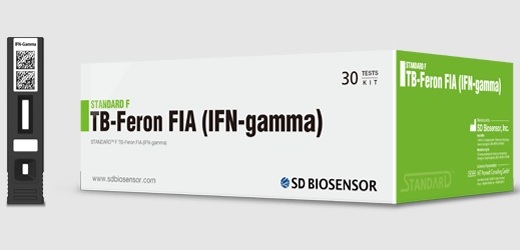Novel Fecal Biomarker Found for Colorectal Cancer
By LabMedica International staff writers
Posted on 17 Oct 2018
Colorectal cancer (CRC) is a lethal disease that has been rising in incidence during recent decades, placing an increasingly important burden on the healthcare system worldwide and gut microbial dysbiosis contributes to the development of this deadly disease.Posted on 17 Oct 2018
Conventionally, “beneficial” Lactobacillus (Lb) and Bifidobacterium (Bb) have been employed as probiotics in humans, having displayed anti-carcinogenic effects in animal models. Faecalibacterium prausnitzii (Fp), the sole known species of Faecalibacterium, is an anti-inflammatory commensal anaerobe.

Image: The LightCycler 480 II is a high-performance, medium- to high-throughput PCR platform (Photo courtesy of Roche).
Scientists at the Sun Yat-sen University (Guangzhou, China) and their colleagues measured the relative abundance of Fusobacterium nucleatum (Fn), Faecalibacterium prausnitzii (Fp), Bifidobacterium (Bb), and Lactobacillus (Lb) by quantitative polymerase chain reaction (PCR) in fecal samples from two cohorts of 903 individuals. They evaluated and validated the diagnostic performance of these microbial ratios and investigated the antagonistic effect of Fn against three different indicator stains.
The quantification of the microbiomes' target and reference gene (universal 16S rDNA) was performed in triplicate on a LightCycler 480 II using an SYBR Green-based assay. The minimum inhibitory concentration (MIC) of the cell-free culture supernatants (CFSs) was determined according to the standard broth microdilution method. Flow cytometric measurements were performed on a flow cytometer.
The team reported that the microbial ratio of Fn to Bb (Fn/Bb) had a superior sensitivity of 84.6% and specificity of 92.3% in detecting CRC (area under the curve, AUC = 0.911). The combination of Fn/Bb and Fn/Fp improved the diagnostic value (AUC = 0.943). Moreover, the combination of Fn/Bb and Fn/Fp offered 60.0% specificity and 90.0% sensitivity in detecting stage I of CRC (AUC = 0.804). In particular, Fn was negatively correlated with Fp in the CRC group. The performance for CRC diagnosis was confirmed in the validation cohort II. The culture supernatant from Fn exhibited strong bactericidal activity against probiotics Fp and Bb strains.
The authors concluded that Fn could play a role in microbiota dysbiosis via the secreted antagonistic substances against probiotics. Moreover, the ratio of Fn to the important probiotics Fp and Bb was identified as a valuable biomarker for screening early CRC. The study was published in the September 2018 issue of the journal Clinical Chemistry.
Related Links:
Sun Yat-sen University














